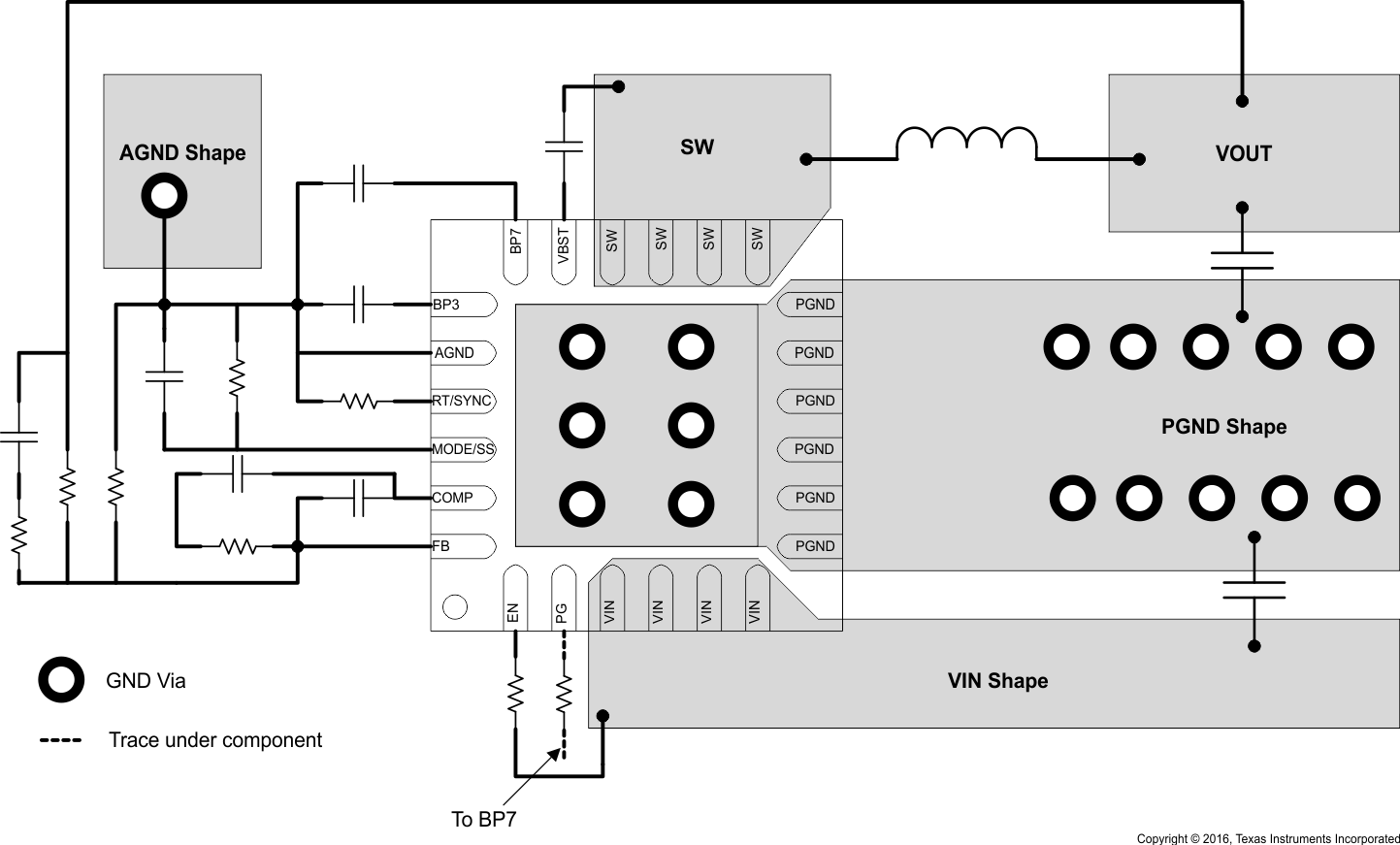ZHCSFM8A December 2011 – October 2016 TPS53313
PRODUCTION DATA.
- 1 特性
- 2 应用
- 3 说明
- 4 修订历史记录
- 5 Pin Configuration and Functions
- 6 Specifications
- 7 Detailed Description
- 8 Application and Implementation
- 9 Power Supply Recommendations
- 10Layout
- 11器件和文档支持
- 12机械、封装和可订购信息
封装选项
机械数据 (封装 | 引脚)
- RGE|24
散热焊盘机械数据 (封装 | 引脚)
- RGE|24
订购信息
10 Layout
10.1 Layout Guidelines
Good layout is essential for stable power supply operation. Follow these guidelines for an efficient PCB layout:
- Separate the power ground and analog ground planes. Connect them together at one location.
- Use 6 vias to connect the thermal pad to power ground.
- Place VIN, BP7 and BP3 decoupling capacitors as close to the device as possible.
- Use wide traces for VIN, PGND and SW. These nodes carry high-current and also serve as heat sinks.
- Place feedback and compensation components as close to the device as possible.
- Keep analog signals (FB, COMP) away from noisy signals (SW, VBST).
10.2 Layout Example
 Figure 26. TPS53313 Layout Example
Figure 26. TPS53313 Layout Example